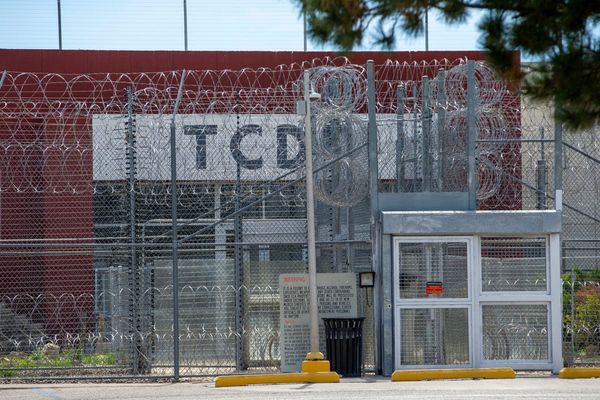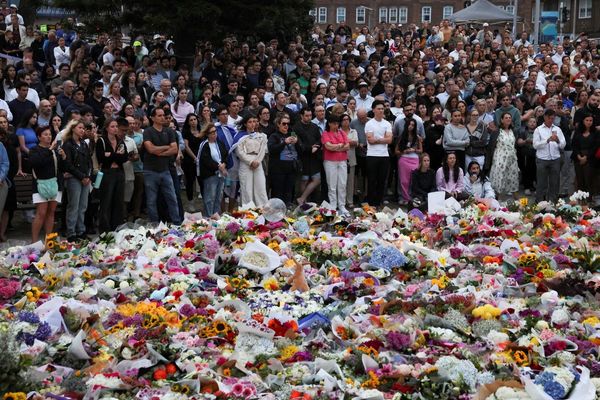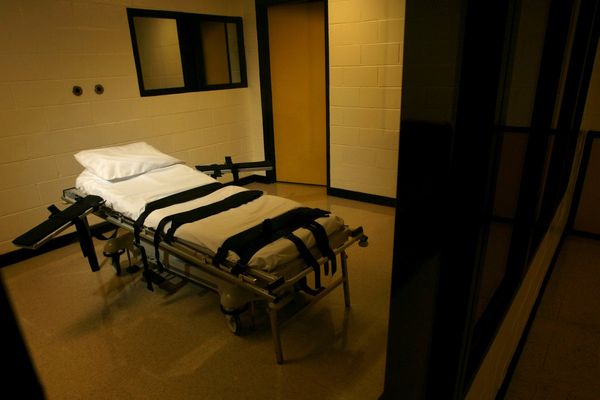
Alleged killer Dezi Freeman may be hiding in one of hundreds of mineshafts sunk in the Porepunkah region over the last two centuries, which would prevent his heat signature being detected, one expert says.
It has been more than a week since Freeman fled into rugged bushland in the Victorian high country, and police are likely using helicopters and drones equipped with infrared imaging technology in the hunt for him.
Locals and experts have speculated that he may be hiding down a mineshaft or has an underground bunker.
There are thousands of old mineshafts across Victoria. Horizontal tunnels called adits, made for drainage or access, provide ready-made caves.
Sign up: AU Breaking News email
“We’ve found beds in there,” author and amateur goldfields historian Darby Lee says, adding that historically they have provided a warm, dry place for people with limited options.
Freeman, who shares views with the “sovereign citizen” movement, vanished into the alpine wilds after allegedly shooting three police officers, killing two of them, in Porepunkah.
The Victoria police chief commissioner, Mike Bush, says they believe the 56-year-old fugitive has “long arms, powerful firearms, multiple firearms”, and that Freeman’s bush knowledge is a challenge for them.
“He knows that area. Even though we have experts in the area, he will know that area better than us, so we’re putting in every expert, supported by local knowledge as well,” Bush says.
The Victorian Alps include the state’s highest mountains, multiple national parks and ski resorts. There are also rivers, dense bushland, vertiginous cliffs and those mineshafts, which can act as booby traps.
The police hunt – which includes the Special Operations Group, the fugitive squad, and the Critical Incident Response Team – has been hampered by the dangerous terrain as well as bad weather.
Lee, who also runs historic gold prospecting tours, has explored mineshafts in the area.
“I’ve got a feeling he’s underground … a mineshaft or a bunker. If they’re not getting pictures or heat signals, he’s underground.”
Lee says that for every mineshaft registered, there’s another that’s not. And there’s a history of people camping out.
“The old-timers used to do it around Bendigo all the time, until the 60s and the 70s, when the councils got on to it,” he says.
“We’ve found beds in there. It’s dry, it’s warm, and it might look a big gnarly but it’ll keep you out of trouble.”
It’s not the first time police have been stymied by someone disappearing in the high country.
Porepunkah is a couple of hours north of Wonnangatta Valley, where Russell Hill and Carol Clay went missing in 2020, before being found dead.
Conrad Whitlock has been missing since 2019 – his car was found halfway up nearby Mount Buller. Hiker Niels Becker went missing on a solo hike in the national park in 2019. There are more.
And it’s an area with a violent history. On the other side of Great Alpine Road is where the Buckland Riot happened in 1857. European miners attacked thousands of Chinese miners, killing dozens and driving thousands away. Heritage Victoria says there are likely more than 50 graves at the site, covered in heavy vegetation.
About an hour’s drive north-west is Glenrowan, the site of Ned Kelly’s last stand after killing three policemen in the 1878 Stringybark Creek shootout.
Survivalist and author Ky Furneaux says Freeman knows police will be looking for him on the ground with tracker dogs and from the air with thermal imaging.
She says in the alps, the first priority would be shelter. “In every survival scenario you’ll look at your location, your liabilities and assets,” she says.
“At this time of year his biggest liability will be exposure to cold so he’ll need shelter first. If you’re lost in the alps you don’t worry about water, you’ll be OK.”
She says if he’s a prepper, he’s likely to have an established setup in a bunker or a cave, a plan for “if the world went crazy”.
“If they’re old-style peppers, they have it full of water, water filters, food supplies, stashes to get them through probably about three months … a cave maintains a temperature that’s livable all year round, and it’s heatable if it gets cold,” she says.
On Monday, Victoria police switched the focus of their investigations to call on people to reveal the gunman’s location. Supt Brett Kahan said people “know the whereabouts of the person who’s allegedly killed two cops” but have chosen not to come forward.
“You are committing an extremely serious crime by harbouring or assisting in the escape of Dezi Freeman,” he said.
Victoria police declined to comment on the technology they are using, but have said they would use all resources at their disposal.
The government has previously said the police vehicle fleet provides “access to state-of-the-art camera and mapping systems, providing valuable intelligence and surveillance and better preparing them to respond to any emergency, rescue operation or threats of violence and terrorism” including infrared cameras.
Terry Goldsworthy, associate professor in criminal justice and criminology at Bond University, says their available technology includes helicopters and drones, some with infrared imaging; armoured Bearcat vehicles that can travel off-road, are bullet resistant and blast resistant; and an ambulance helicopter.
Michael Coates from C-Astral Aerospace Search and Rescue told the ABC helicopters would use optical cameras, infrared and a thermal camera that can see through vegetation and filter out kangaroos and other animals.
“The only way to really hide with a thermal camera is to get into a cave or a big overhang … There’s goldmines in the area, you could drop down in one of them if it’s vertical or go in the side of the hill and that would allow you to evade detection as long as you stay there.”
Heritage Victoria says there are thousands of mineshafts across Victoria, with hundreds sunk in the Buckland forest region near Porepunkah between 1853 – after the discovery of gold at Ballarat sparked the rush – and the early 20th century.







